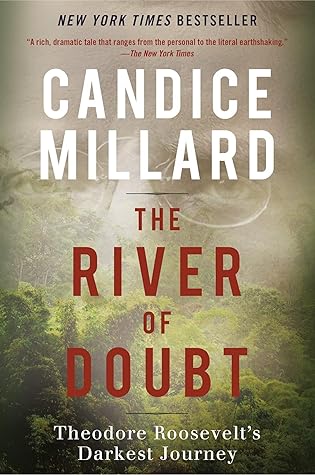More on this book
Community
Kindle Notes & Highlights
Read between
March 28 - April 23, 2025
Roosevelt first learned of the attacks on his expedition when he was in Barbados. By the time he reached New York, he was incensed and determined to confront his detractors head-on.
He was determined to set the record straight, no matter what the cost to his health.
The speech left Roosevelt’s detractors mute.
ROOSEVELT HAD won again. He had humiliated his enemies, defended his expedition, and restored his reputation. However, he still had one insidious foe: the fever and infection that had nearly claimed his life on the River of Doubt and which now refused to release its hold on his aging and overused body.
Rondon today remains one of Brazil’s greatest heroes, and his efforts on behalf of the Amazonian Indians have endured in the form of the modern Indian Protection Service—the National Indian Foundation, or FUNAI. In spite of all that he had tried to do for the Indians he loved, however, the inroads he made into their territory have had as devastating an impact on their survival as the rubber boom. During Rondon’s last years, in the 1950s, the path that he had carved out of the wilderness for his short-lived telegraph line became a road now known as BR-364. That road brought cattle ranchers,
...more
Just as Roosevelt’s only brother, Elliott, had been devastated by the death of their father, so did the death of his own father deliver a staggering blow to Kermit. His romanticism and quiet introversion had been warmly reminiscent of his uncle Elliott in his youth, but the similarities between the two men in adulthood were as striking as they were tragic.
The Cinta Larga’s war against the outside world became a matter of self-preservation, a pitched battle against extinction.


